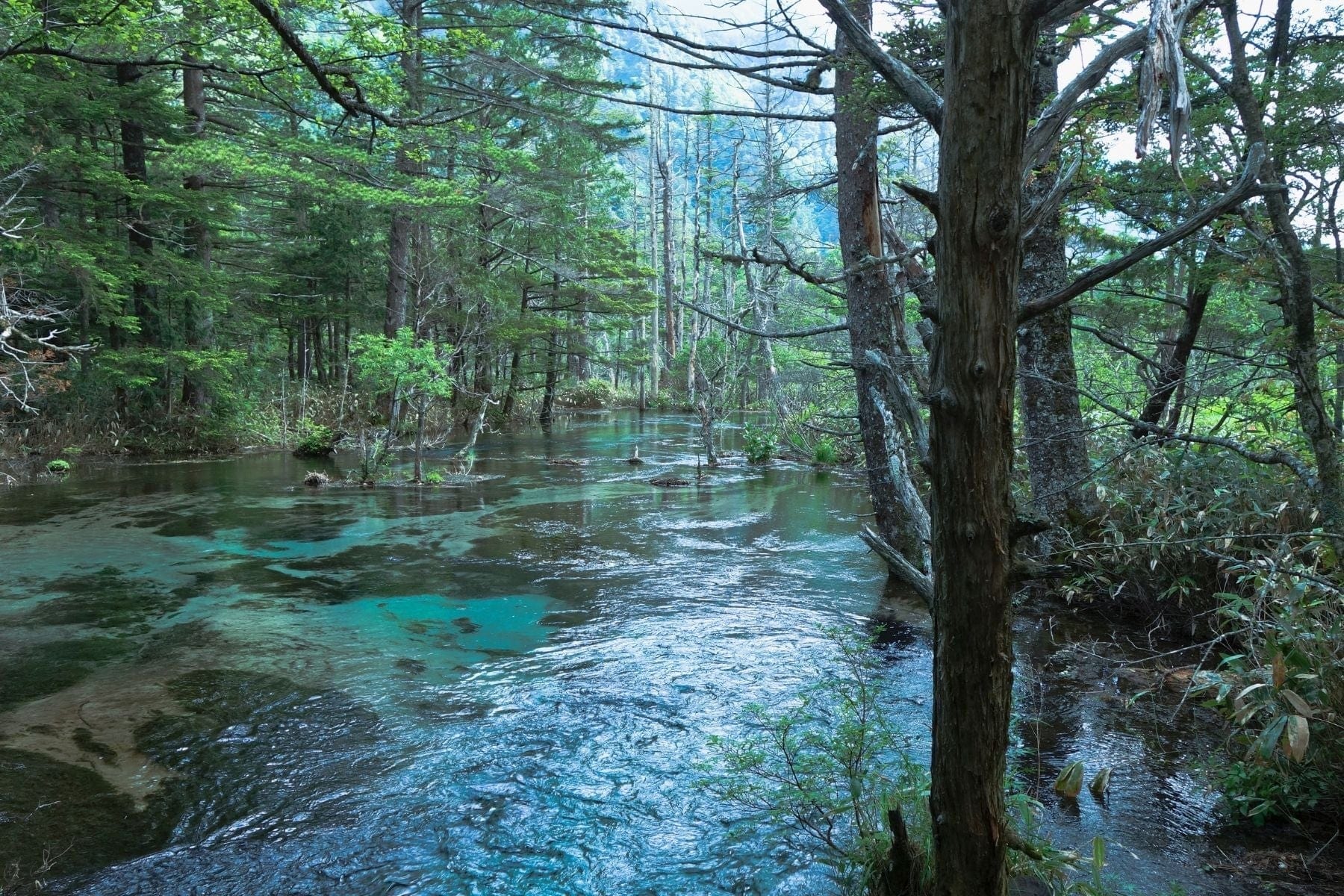
Get news, updates, & event Info delivered right to your inbox:
How Forests Protect Cities From Floods
Go to your kitchen sink and open the tap. If you can take a glass, fill it with cool crisp liquid from the faucet, and take a nice big gulp you can likely thank trees for that refreshing drink of water.
Cities often have intricate water systems to ensure you have access to clean water. But at the very beginning of all the pipes and pumps lies a forest: trees help to clean the water.
New York City is a great example of making the most of nature. The city saved money by conserving and restoring the Catskills/Delaware watershed, which supplies 90% of its water. By investing some $1.5 billion to protect the forested watershed, the city avoided building a water filtration plant and saved between $6-8 billion dollars.

A third of the world’s largest cities rely on protected forests for their water. And with a rapidly growing and urbanizing global population, that number will only increase in the future.
How Do Forests Help Cities?
1. Forests Provide Water
A forest’s first role in managing a city's water comes from the vapor produced by its trees and vegetation. Water captured, stored, and released by forest canopy is an important factor in regulating precipitation and the evaporation of groundwater.
Forests create rainfall that flows downstream and supplies cities with fresh water!
Unfortunately, if forested watersheds become degraded, the regularity of precipitation is thrown off and rainfall becomes less predictable, leading to fluctuating periods of flooding and drought.
The impact of deforestation on a city’s water supply became abundantly clear in Brazil just four years ago. Riots broke out in Sao Paulo and the surrounding municipalities when a record-breaking drought brought reservoir levels down to just 5% - only a months supply for an area with more than 21 million people.
The drought has been blamed on large-scale deforestation to make room for agricultural production taking place in the nearby Amazon rainforest. Without the trees to regulate precipitation, Brazil’s biggest city nearly found itself without any water at all.
Deforestation impacts global water supply too. Cutting down trees hurts those living nearby the most, but scientists believe that widespread deforestation in the Amazon could impact areas as far away as California, and even Africa, regions already plagued by droughts.

2. Forests Filter Water
But the forest’s job doesn’t stop at just helping generate rain.
After the rain comes tumbling down, trees stabilize the soil and prevent erosion. The root systems of forest vegetation maintain the forest floor, ensuring sediment and other materials aren’t swept into city water systems.
Without this natural filtration, water flowing out of the taps would be filled with runoff, requiring excessively expensive treatment plants to make the water drinkable.
For example, wildfires in Colorado during the late 1990s and early 2000s destroyed important watersheds, resulting in over $25 million in clean up costs to Denver’s water utility. Denver has since invested in protecting those forested watersheds from wildfires and degradation. You can also learn more about our tree planting projects in Colorado.

3. Forests Control Floods
As you may know, trees help to clean water and forests take on all that water they play another vital role for cities: flood control.
Not only are the trees root systems filtering out pollutants, they are also slowing down the flow of water towards creeks, rivers, lakes, and ultimately cities. Forests require a lot of water to grow, so as rainwater soaks into the soil trees absorb substantial amounts through their roots. This uptake slows water down, stopping it from crashing downstream and flooding cities along the way.
Chopping down large swaths of trees to make way for other land uses makes water absorption impossible and creates a much higher risk of flooding.
Few places have experienced this worse than Jakarta, Indonesia. Fifty percent of Jakarta’s main watershed has been converted to agricultural land or urban development. Without the trees to stop it, throughout the rainy season water fills the many rivers running through the city of more than 10 million people, forcing many to evacuate their homes. You can help the environment by planting trees in Indonesia.
Why Cities Need Forests
Despite being surrounded by pavement, skyscrapers and all necessary amenities, life in the city is drastically improved by the existence of all types of forests, both near and far. They provide potable water, reduce utility costs, and can even save people's lives and livelihoods.
And these are just a few ways forests benefit cities, but forests provide much more to urban and rural communities everywhere. Trees clean the air we breath, provide innumerable health benefits, and support biodiversity.
So if you want to continue getting fresh water from your tap make sure you are protecting forests any way you can and learn more about the Cities4Forests initiative to get involved in your own city! Looking to do more? Plant trees with us today!
Get news, updates, & event Info delivered right to your inbox:
Related Posts
9 Sustainable New Years Resolutions
18/12/2025 by Meaghan Weeden
Inspirational Quotes About Trees
16/12/2025 by Meaghan Weeden
The 9 Oldest, Tallest, and Biggest Trees in the World
11/12/2025 by One Tree Planted
Popular On One Tree Planted
Inspirational Quotes About Trees
16/12/2025 by Meaghan Weeden
The 9 Oldest, Tallest, and Biggest Trees in the World
11/12/2025 by One Tree Planted
What Causes Deforestation?
10/07/2025 by Meaghan Weeden
Fundraising Disclosures

Be Part of the
Restoration Movement
The Grove is more than just a monthly giving program: it's a vibrant community of individuals who are dedicated to reforestation and environmental restoration on a global scale.
As a member of The Grove, you affirm your commitment to restoring forests, nurturing biodiversity, and fostering positive global change.



